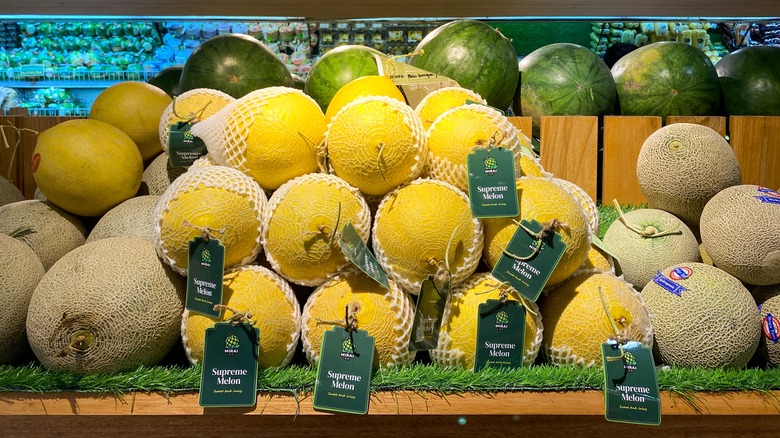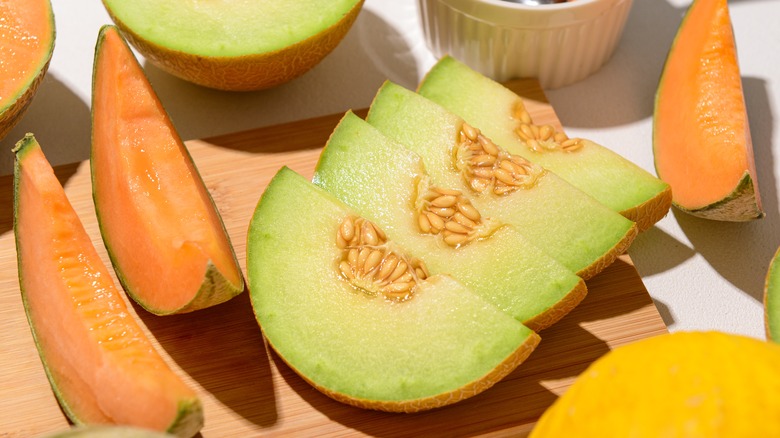Why You Should Give Melons A Quick Shake Before Buying Them
Green, ripe, or past its time? The clues to finding a perfect melon can be subtle and choosing a good one is something of an art. One reliable tip for finding a ripe and juicy variety is to pick it up, give it a shake, and listen. If you hear the liquid sloshing around, it's too ripe and has started to liquefy. No noise at all is a good sign since it means the fruit is still firm. And a rattling sound means the melon has begun to dry out and its seeds are bouncing around.
This technique should also work for cantaloupe, honeydew, or other small melons but it's not practical for big, heavy watermelons. Over the years, people have come up with other creative ways to judge ripeness, including placing a broom straw across a watermelon. If the straw turned 45 degrees, supposedly, it was ripe. Another method involved rolling a melon toward another person. If it rolled to the right, they decided it was ready to eat.
While there's not much proof to back up either of those techniques, there are a few more time-tested clues to try.
Other easy ways to know when melons are ripe
If you're lucky, you may find up to 16 types of melon at your local market, and for many the colors of their rinds can tell you how ripe they are. Honeydews should look more yellow than green, while cantaloupes should be green or yellow with an even pattern of tan webbing, and ripe Santa Claus melons should have bright yellow on their rinds.
To judge a watermelon, check the color of the field spot where it rested as it grew. A creamy, yellow spot tells you it's ripe, white or green may have been picked too soon, and darker yellow means it's starting to get mushy inside. You can also follow the two-finger trick, using the width of a watermelon's stripes to judge if it is ripe. Take a close look at the ends of the fruit too. If you see a piece of stem attached, that means it was picked too soon. Some people prefer to pick a ripe cantaloupe by smelling it since the blossom end of a ripe version should smell sweet.
If you're still in doubt, pick up two varieties around the same size and compare their weight. The heavier one will have a higher water content, which means you can expect a ripe, sweet, and juicy treat inside. Rely on these tips every time you're buying melons and you'll always pick a winner.

